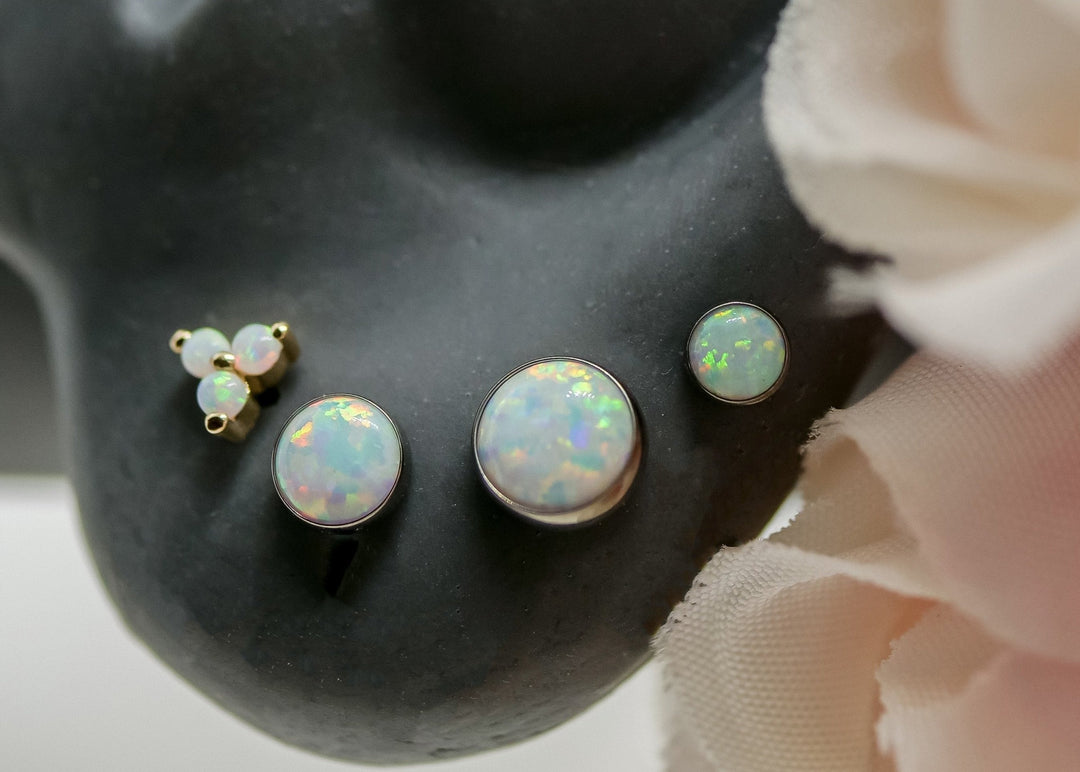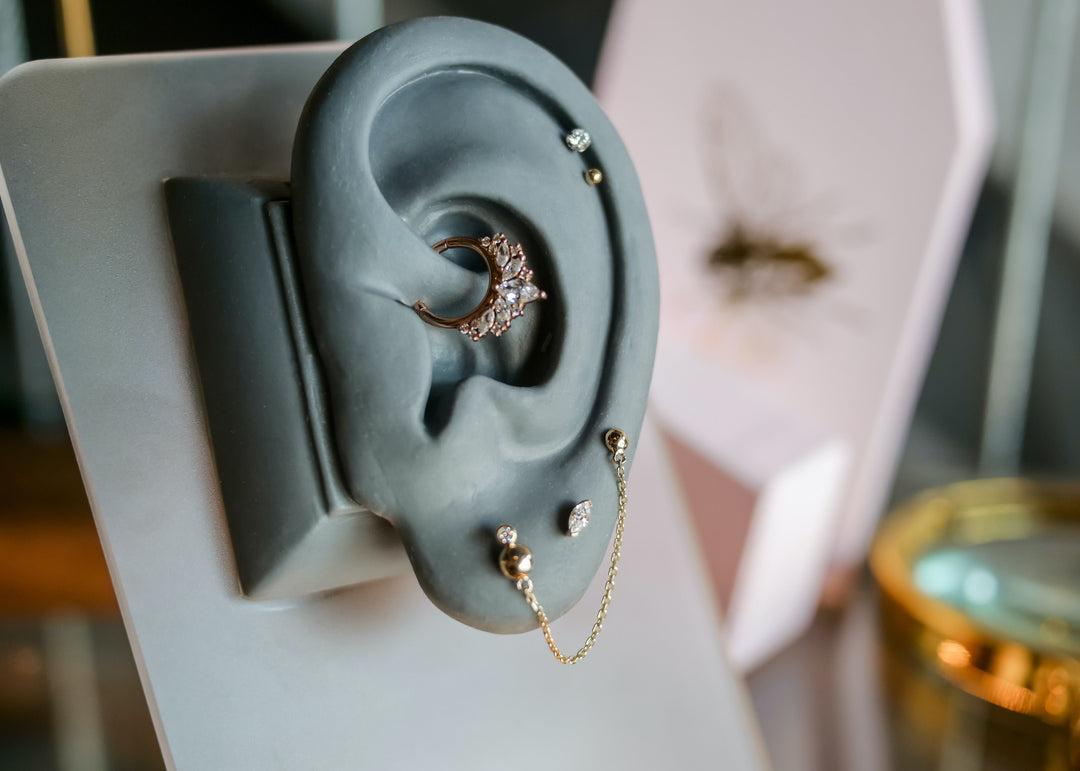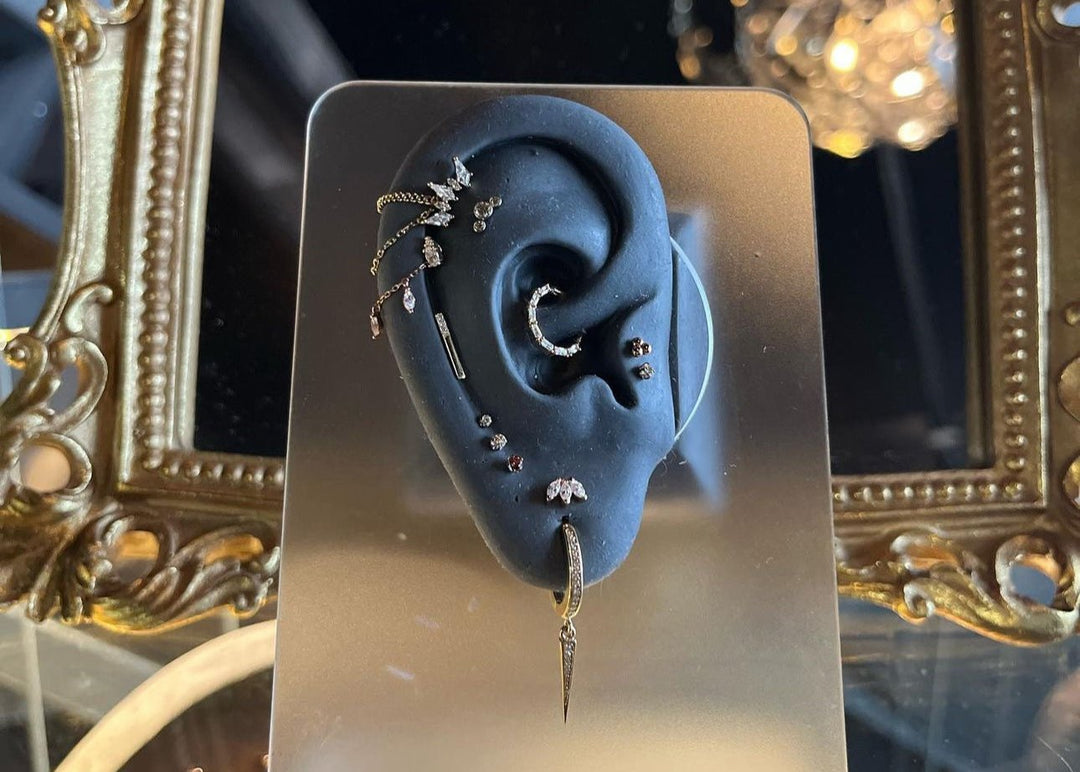When it comes to body modifications, ear piercings have become an art form of their own. With the sheer variety of placement options and jewelry styles, curating a unique “earscape” is more than just a trend—it’s a powerful statement of personal style and self-expression. Whether you’re a first-timer or a seasoned piercing enthusiast looking to add something new, understanding the various types of ear piercings can help you find the perfect fit for your aesthetic and lifestyle.
1. Earlobe Piercing: The Classic Starting Point
- Placement: The soft, fleshy lower part of the ear.
- Why It’s Popular: Earlobe piercings are among the most common and least painful, making them the go-to choice for many first-time piercees.
- Healing Time: Typically 6-8 weeks, though each individual differs.
- Style Tips: Everything goes—from simple studs and sleek hoops to extravagant drop earrings. Earlobes are a versatile canvas for any look.
2. Helix Piercing: Adding Dimension to Your Outer Ear
- Placement: The outer rim of the ear’s cartilage.
- Why It’s Popular: A helix piercing can instantly elevate your ear game, adding dimension and visual interest. It’s relatively subtle, making it beginner-friendly as far as cartilage piercings go.
- Healing Time: Often 3-6 months, though full healing can take longer. Patience is key!
- Style Tips: Thin hoops and small, delicate studs are perfect here. Stacking multiple helix piercings can create an elegant “constellation” effect.
3. Forward Helix Piercing: A Delicate Detail
- Placement: The front-facing portion of the outer rim, near where the ear meets the head.
- Why It’s Popular: Forward helix piercings are more unique than their standard helix cousins, offering a chance to show off daintier jewelry in a highly visible spot.
- Healing Time: Similar to a standard helix, about 3-6 months or more.
- Style Tips: Tiny gemstones or subtle metal studs shine here, especially when worn as a coordinated trio.
4. Conch Piercing: A Center-Stage Statement
- Placement: The inner cartilage, where the ear’s “shell” (the concha) resides.
- Why It’s Popular: Conch piercings create a striking focal point, perfect for statement jewelry like bold hoops that “hug” the ear’s curvature.
- Healing Time: Usually 6-9 months. Be ready for a dedicated aftercare routine.
- Style Tips: Classic captive bead rings or hoop clickers really pop in this central position.
5. Tragus Piercing: Subtle and Chic
- Placement: The small, thick piece of cartilage that partially covers your ear canal.
- Why It’s Popular: The tragus offers a subtle yet distinguished look. Since it sits close to the face, it can provide a delicate accent to your overall style.
- Healing Time: About 3-9 months, depending on how your body heals.
- Style Tips: Tiny studs or snug-fitting circular barbells work best, drawing attention without overwhelming the ear.
6. Daith Piercing: A Hidden Gem with Style
- Placement: The innermost fold of cartilage, nestled snugly in the ear.
- Why It’s Popular: Daith piercings are often considered the “secret” piercing—just noticeable enough to intrigue, yet discreet enough to be truly unique. They’ve also gained a bit of a following for their rumored (though unproven) migraine-relief benefits.
- Healing Time: Typically 6-9 months. This is a tricky spot, so proper aftercare is crucial.
- Style Tips: Stunning heart-shaped rings or subtle, sleek clickers can create a delicate centerpiece that looks like a hidden treasure.
Caring for Your Cartilage: Best Practices
No matter which piercing you choose, proper aftercare is essential. Clean your new piercing twice daily with a gentle, saline-based solution and avoid touching it unnecessarily. For cartilage piercings, you’ll want to be extra cautious about sleeping on the fresh piercing and exposing it to harsh hair products or headphones. If you notice any prolonged redness, swelling, or discomfort, contact your piercer or a healthcare professional.
Choosing Your Perfect Ear Piercing
Everyone’s ears are different—not only in shape but also in healing times and sensitivities. Before committing, consider your pain tolerance, your lifestyle (especially if you wear helmets, headphones, or masks frequently), and the amount of daily maintenance you’re willing to invest.
When in doubt, consulting a professional piercer is always a good idea. They can help guide you through placement options, proper healing timelines, and selecting jewelry materials compatible with your skin. At the end of the day, your piercings should reflect you—your personality, your style, and your comfort level.






